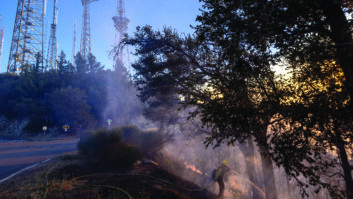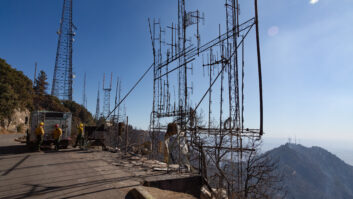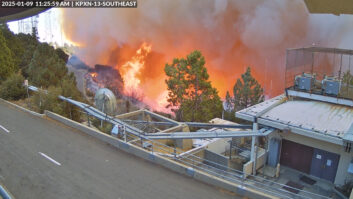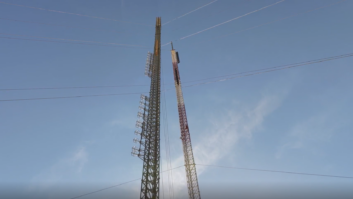Radio Frequency Systems (RFS) issued a press release this week with details about a new shared digital TV facility on Mt. Wilson, the well-known RF site serving Los Angeles.
Given the attention to both the digital transition and to Mt. Wilson RF matters, we thought Radio World readers would be interested in the details. We reproduce excerpts here:
“Set to go on-air in March this year, four Los Angeles broadcasters are sharing digital broadcasting facilities atop the city’s premier site, Mount Wilson. The broadband antenna system, designed and manufactured by wireless technology group Radio Frequency Systems, is initially supporting seven combined analog and digital services, with the capacity to accommodate 12. …
“Broadcast consultant S. Merrill Weiss, of the Merrill Weiss Group, has been working with RFS, infrastructure provider American Tower Corp., and transmitter manufacturer Axcera, to develop a multi-system digital/analog solution for Los Angeles broadcasters KDOC, KXLA, KOCE and KJLA. The combined system, the first stage of which was completed in November 2003, means all seven new services can broadcast from the mountain, sharing facilities without interfering with each other,” the RFS press release continued.
“According to Weiss, the ability to control the antenna pattern was essential. In particular, the patterns had to be sculpted so that they reduce towards the Mexican border–just 129 miles distant–without losing any performance in the city. ‘I don’t know any way, other than using panel antennas, we could have done this without compromising performance,’ Weiss said. …
“The resulting RFS solution comprises dual combined antenna systems with the capacity to accommodate a total of 12 digital or analog services from channel 32 to 56. Two chains of a specially designed high-power directional waveguide combiner–expandable to six modules each–were installed in the first half of 2003; followed by the raising of two stacked 10-level broadband panel arrays and eight associated flexible coaxial feeders in October,” the RFS press release stated.
“According to Nick Wymant, RFS project manager, an added challenge was optimizing the rigid line systems between the transmitters, and the combiners and flexible coaxial feeders, which are located in different buildings because of the very crowded nature of the site. ‘We took great care during the design phase to minimize the reflections that could have occurred due to the large number of components in the rigid feed system,’ he said. ‘This involved the development of high-performance broadband ‘elbows’, which we tuned to optimize system performance.’ …







